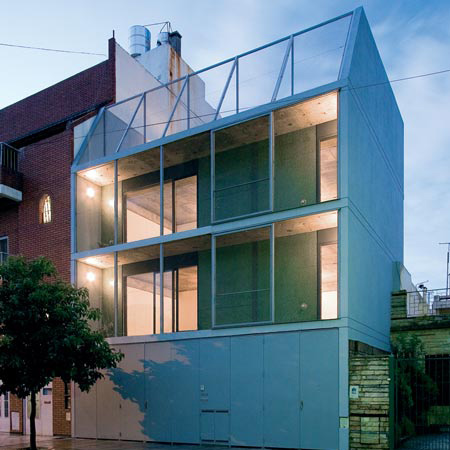
Casas Lago in Buenos Aires is the first built project from young Argentinian architects Adamo-Faiden.
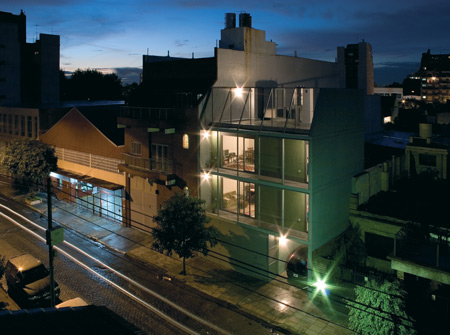
The architects describe the building, which was completed last year, as “two very small and economic houses in a typical neighbourhood of Buenos Aires”.
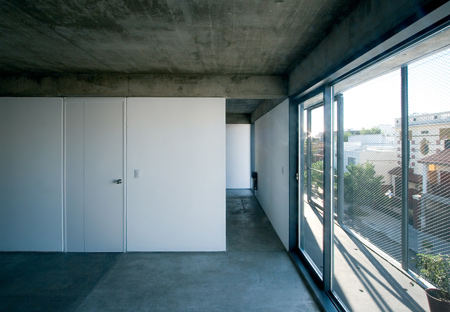
Here’s a fact sheet provided by the architects, followed by some prose, which we assume has something to do with the project:
–
Casas Lago (2006-2007).
Studio: Adamo-Faiden.
Project team: Sebastián Adamo, Marcelo Faiden, Carolina Leveroni, Paula Müller, Luciana Baiocco.
Client: Lago family.
Budget: US$ 37.000
Location: Morón 3939, Floresta. Buenos Aires.
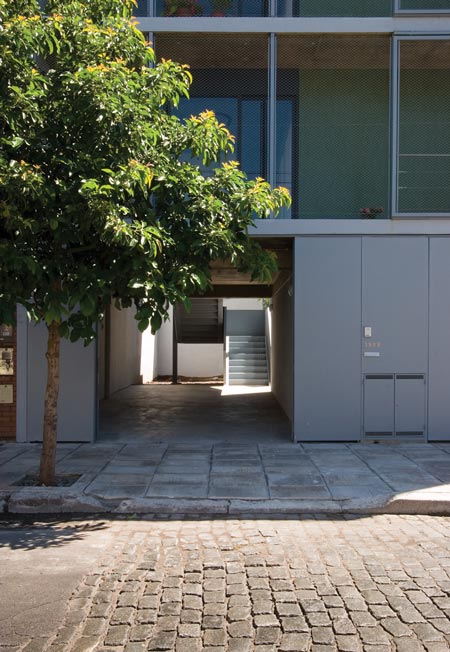
The contemporary constructor
The contemporary constructor walks through a hotel corridor. Countless rooms converge to it. You can find someone righting an atheist book in one of the rooms. In the next one, there may be someone on his knees begging for faith and fortitude; in a third room there could be a chemist researching body properties. In a fourth room there might be someone designing a model of idealistic metaphysics; and in a fifth room, someone demonstrating the impossibility of metaphysics. They all share the same corridor. The contemporary constructor should walk along the corridor if he wishes to have a practical way of going inside and out of his own room.
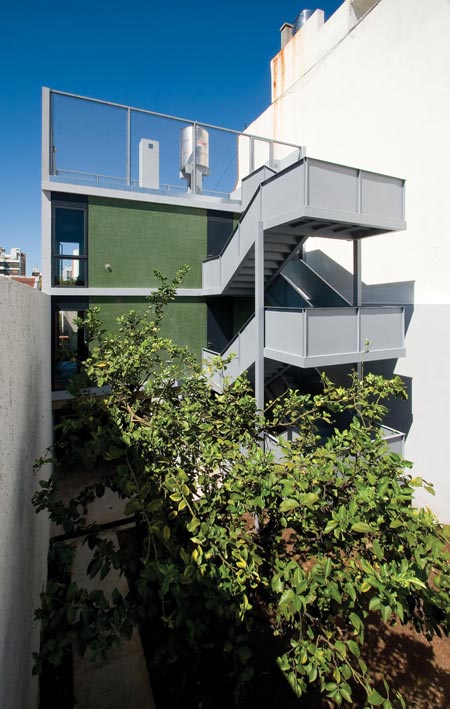
The contemporary constructor understands the world as a collection of particular facts in constant motion, not a puzzle which pieces reconstruct a whole by fitting ones with anothers. He describes them as a mosaic whitout glue, with multiple loose pieces, which are free and have value on their own and in relation to the others, developing diferent asosiations and in changing conections.
The conemporay constructor gives up on certainty and objectivity as the goal to means of thinking, he places himself into an heterogenic and unstable context and he does so with certain optimism, knowing that unstable and heterogenic are not a traumatic accident but precious crative material, genuine object of contemporary imagination.
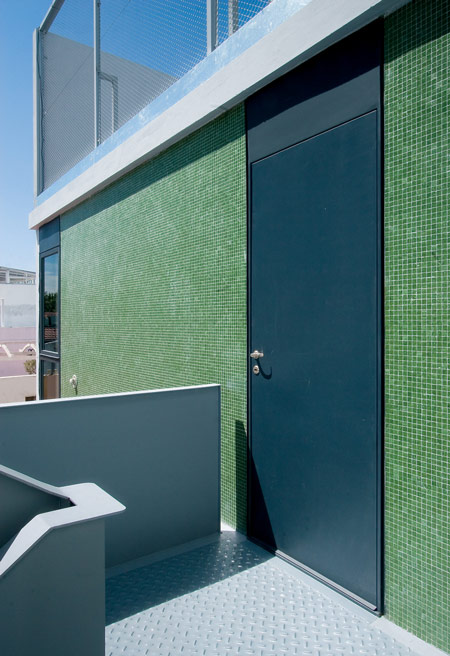
The contamporary constructor constantly expands his net of relations. He believes that the best way of doing it is by reading books, so he spends most of his time taking special attention to books rather than real people. He knows that if he only meets “neighbourgh people” he will be stuck in the languaje in wich he was educated, therefore he tries exchanging knowledge with unknown constuctors, techniques and enviroments.
The contemporary constructor uses his necessity of producing as the perfect excuse to study. A studio is a place to study.
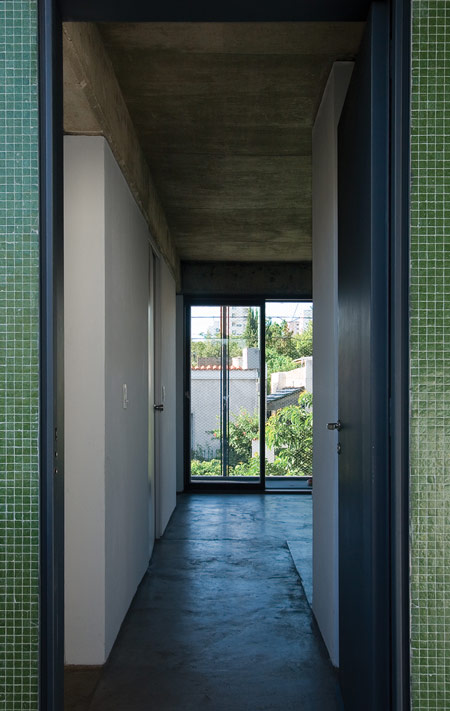
The contemporary constructor is always chatting with history. Without memory his innovations become just the latest news. History brings direction to his personal growth. But as the same way his memory is not ever perfect, each memory becomes a mixed image of a previous moment or situation. This way, each memory becomes always a new one, a partial and diferent construction of its origin, and as such, with potential for his personal growth.
The contemporary constructor knows that most every object can become ocasionally important any day, he sees the advantage of possesing a truth reserve, or ideas that would be truth in mere posible situations. The contamporary constructor stores these extra truths in his memory and with the exess he fills his consult book. When one of those extra truths becomes relevant in an emergency, it defrosts and begin functioning in the world and his believing in it turns active.
The contemporary constructor recognizes human daily experiences techniques, he sees what he wants to see and not what he is force to, he sees every packaging in a supermarket as the ocation for an instant beauty explotion, he rejoys with proximity.
The contemporary constructor creates new words, constantly expands his vocabulary. He assures that new circumstances requires a new way of thinking, requiring at the same time new ways of expression. The way he expresses himself creates new circumstances.

The contemporary constructor climbs up to other people’s shoulders. He can go even further held by former constructor’s achievements and even the view is much better from there.
The contemporary constructor imitates sometimes, he is not shy. He tries approaching the original as much as possible because he knows he will never fully reach it and the difference of not doing so will be notable. He reminds us of how underestimated, discredited and fruitful results such imitation as a technique.
The contemporary constructor has a parasitic relation with his precursors. But since he is aware that he could only give birth to a tiny part of himself, he trusts in the benevolence of all those strangers that might find him in the future.
The contemporary constructor turns theories into self insurance tools and not as answers to puzzlers. He does not lean on them, instead he moves forward, and in certain occasions, he rebuilds nature with its help. The contemporary constructor makes our theories flexible; he moderates them and makes them work.
The contemporary constructor does not want to have a defined way of thinking, but he knows how to use the strength from his theorist weakness. As he has a relaxed attitude, it is hard to attack him, but as it is uncertain what he believes in, it is also impossible to become his follower. The contemporary constructor proclaims only one way of behaving (being insistent in what is certain, maybe), so it not probable he might become the replacement for what he is fighting against.
*This description was built with text parts, theories and discarded thoughts of other contemporary constructors.
Sebastián Adamo, Marcelo Faiden. Buenos Aires, February 2006.




所有评论